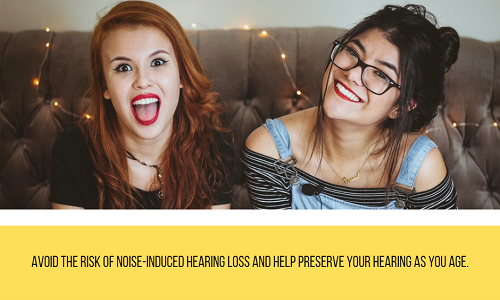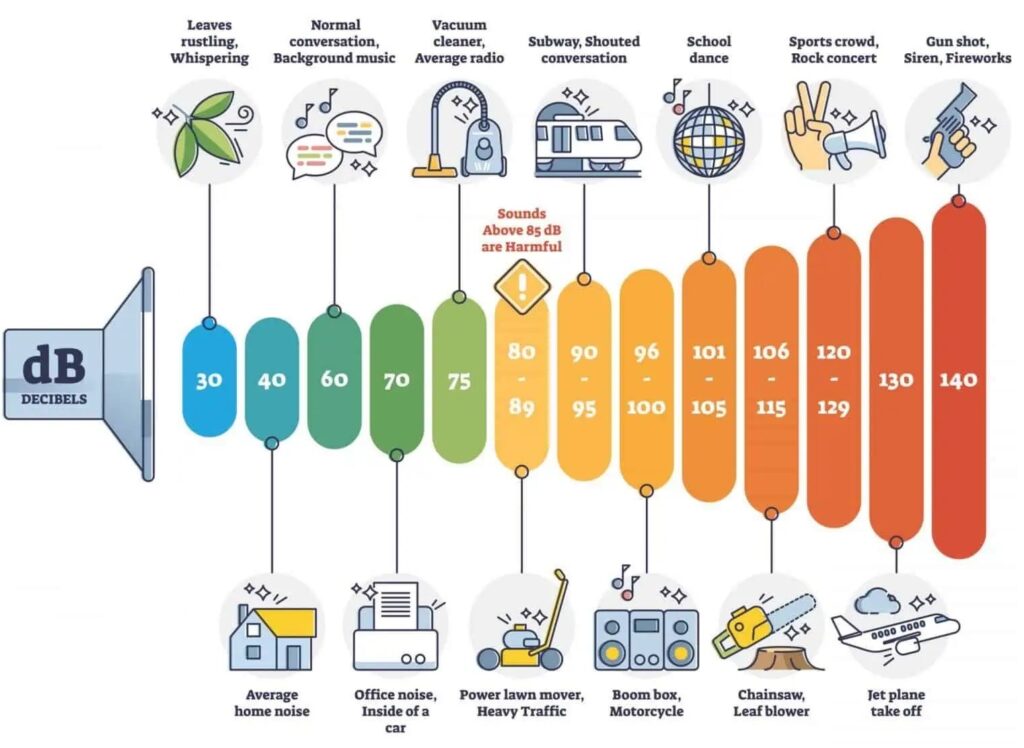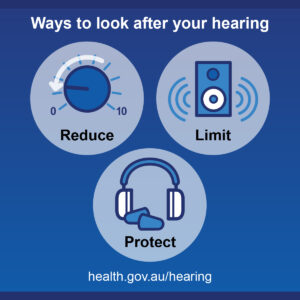August: Safe Listening Week

In the last week of August, we are promoting safe listening habits to protect our hearing.
Australians with good hearing health are better able to lead fulfilling and productive lives. It is important to take care of your hearing to prevent hearing loss and related health problems. Our hearing is precious and fragile so it needs to be protected throughout our lives.
Many people develop hearing loss from prolonged exposure to loud sounds. It can occur in workplace, environmental or recreational settings. Loud sounds damage ears and can lead to persistent tinnitus and hearing loss. The more exposure to loud noise, the worse it gets. It is mostly irreversible.
When hearing loss is ignored it can have a bad effect on many aspects of life.

What is a decibel (dBA)?
Whenever people talk about the level of sound, they most often describe it in decibels.
A decibel is a unit of measurement used to quantify sound intensity. The decibel scale is logarithmic, which means that an increase of one decibel represents a tenfold increase in sound intensity.
For example, a sound with 10 decibels is ten times more intense than a sound with an intensity of 0 decibels. A sound with an intensity of 20 decibels is 100 times more intense than a sound with an intensity of 0 decibels.
The decibel scale is useful for measuring both very small and very large changes in sound intensity. The human ear can detect sounds with intensities as low as 0 decibels, and loud sounds can have intensities exceeding 100 decibels.
Exposure to sounds with intensities above 85 decibels can cause permanent damage to the ear, so it is important to use caution when exposed to such sounds is unavoidable.
1 billion teenagers and young adults worldwide are at risk of hearing loss due to unsafe listening habits.
Throughout the world, nearly 50% of people aged 12–35 years of age – that’s 1.1 billion young people – are at risk of hearing loss due to prolonged exposure to loud sounds, through listening to music on smartphones and audio players, or at music gigs and clubs.
Here in Australia, nearly 50% of young people are exposed to unsafe levels of sound from the use of personal audio devices.
Around 40% of 12–35 year-olds are exposed to damaging sound levels at clubs and bars.
Practising safe listening is one of the simplest ways to prevent hearing loss that is caused by recreational exposure to loud sounds.
Visit the Safe Listening Student Resource Hub.

Explore our FACT Sheets to safeguard your hearing and ensure a brighter, healthier future. Your ears deserve it!
Hearing loss from loud noises is on the rise, and young people are at particularly at risk. Communities in farming and agricultural regions are especially vulnerable, making it crucial to act now to avoid lifelong problems that can impact well-being and future opportunities.
World Health Organization.
Safe Listening Week in Australia supports an international initiative by the World Health Organization, “Make listening safe”. This initiative aims to realise a world where people of all ages can enjoy recreational listening without risk to their hearing. The approach is to change listening practices and behaviours. WHO aims to achieve this through:
- Creation of evidence-based standards
WHO creates standards that outline safe listening features for a variety of situations where unsafe practices are common. These include:
- Increasing awareness
WHO develops and disseminates evidence-based awareness materials for safe listening. These include:
- Investing in research
Research into safe listening is performed in collaboration with our global partners to better understand the current state of affairs, to ensure WHO leverages current best practices around the globe, and to uncover future need of safe listening interventions.

More info about hearing loss.
- Communication and speech.
Unaddressed hearing loss affects the way people connect and communicate; this can have a profound effect on language development in children and hamper communication among adults.
- Cognition.
Language deprivation can lead to delayed cognitive development in children, which can be avoided if suitable intervention is received during the initial years of life. In older adults, unaddressed hearing loss is associated with mental and physical declines and with higher rates of age-related dementia.
- Education and employment.
In developing countries, children with hearing loss and deafness often do not receive schooling. Adults with hearing loss also have a much higher unemployment rate. Among those with hearing loss who are employed, a higher percentage are in lower grades of employment, earn lower wages, or retire earlier than their hearing peers.
- Social and emotional.
Although hearing loss contributes to social isolation and loneliness at all ages, these are experienced more specifically in people of older ages. A reduced ability to understand auditory information and maintain conversations can lead to avoidance of potentially embarrassing social situations. Lack of social engagement and loneliness, especially in older people, may further contribute to cognitive decline and depression.
- Economic.
Along with the distress experienced by individuals with hearing loss and the financial costs faced by families, unaddressed hearing loss results in an annual cost to Australia’s economy of $30 billion dollars. This includes costs for the health sector (which exclude costs of hearing care such as hearing screening, hearing aids, implants or rehabilitation); costs of educational support; and costs resulting from loss of productivity and taxes.
Learn how you can get help with your hearing.
